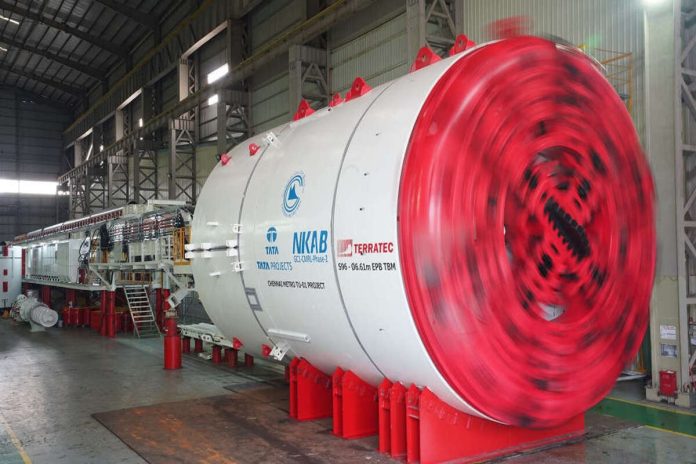Snapshot
-
The estimated cost of the Phase II project is Rs 63,246 crore. Construction is expected to be completed by the end of 2026.
Chennai Metro Rail Limited (CMRL) intends to deploy two specialised tunnel boring machines (TBM) to handle some portions of the underground work in the stretch between Royapettah and Taramani on Corridor-3.
It is due to the rocky terrain underground.
Tunnelling work began last week at Madhavaram as part of the Phase II project on Corridor-3 from Madhavaram to SIPCOT.
The expansion of Metro Phase II is planned with a network length of 118.9 km with 128 stations. It consists of three corridors:
- Corridor-3 – From Madhavaram to SIPCOT (45.8 km)
- Corridor-4 – From Lighthouse to Poonamalle Bypass (26.1 km)
- Corridor-5 – From Madhavaram to Sholinganallur (47 km).
The estimated cost of the Phase II project is Rs 63,246 crore. Construction is expected to be completed by the end of 2026.

CMRL will construct underground stations and tunnels in corridor-3 from Madhavaram to Taramani, and after that, the metro will rise as an elevated segment all the way to SIPCOT.
The Phase II project will require 23 TBMs. Only eight will be working on tunnels between Kellys and Taramani, and of those, two will be used to drill through rock specifically.
CMRL officials said TBMs can normally bore nearly 10 metres per day, but in the presence of hard rock, even these special TBMs can only drill three–four metres per day.
“The soil conditions are definitely manageable from Madhavaram to Kellys. The first 5-7 metres will be sandy, and then we’ll run into marine clay,” an official said, reports The Hindu.
In Phase II, the stations are built at a depth of 18–20 metres, and in a few locations, like Mylapore and Taramani, it goes as deep as 25 metres.
“At Taramani, there will be a rock at a depth of 13–14 metres and hence it could pose a major challenge,” the report added.


